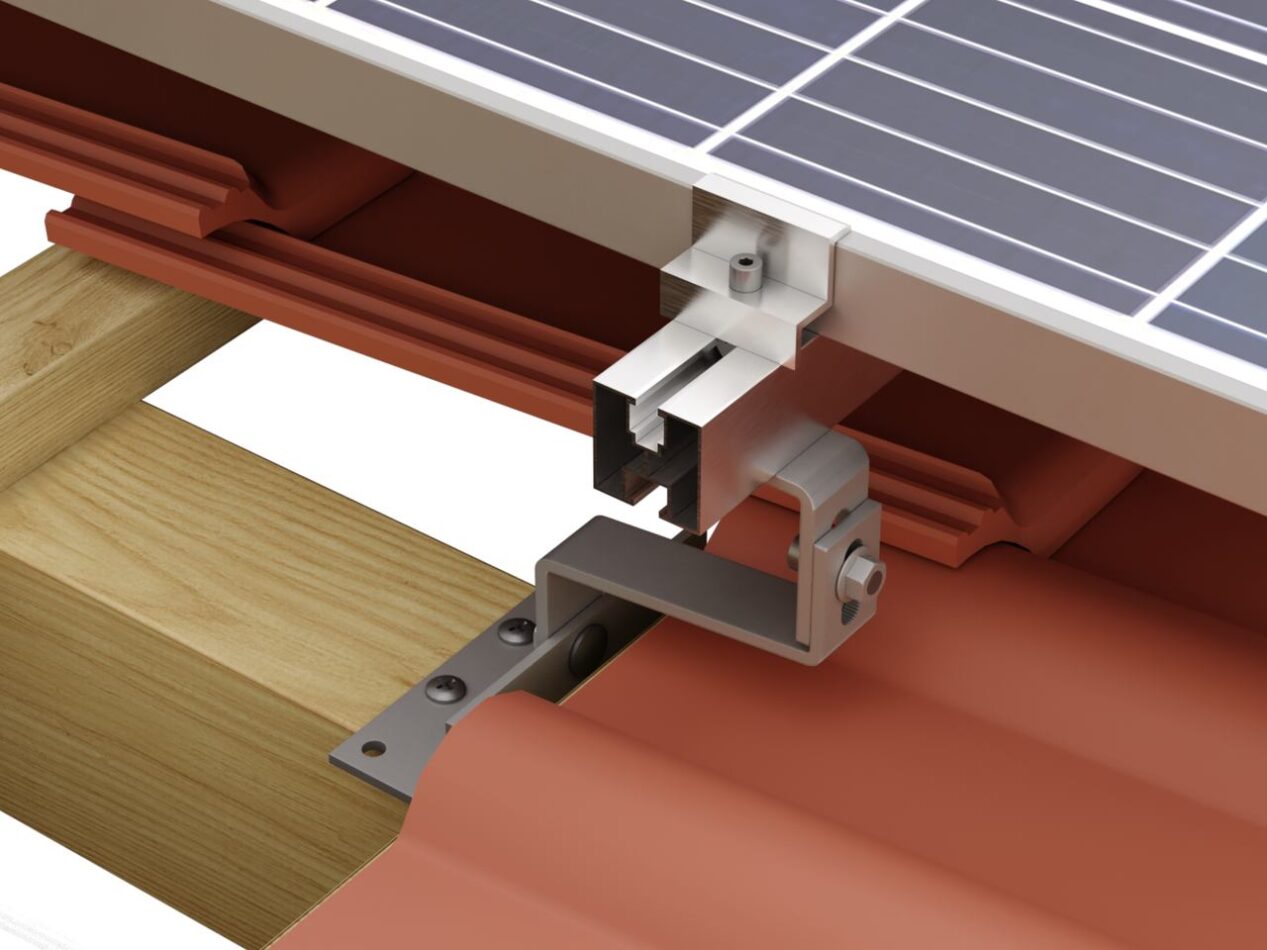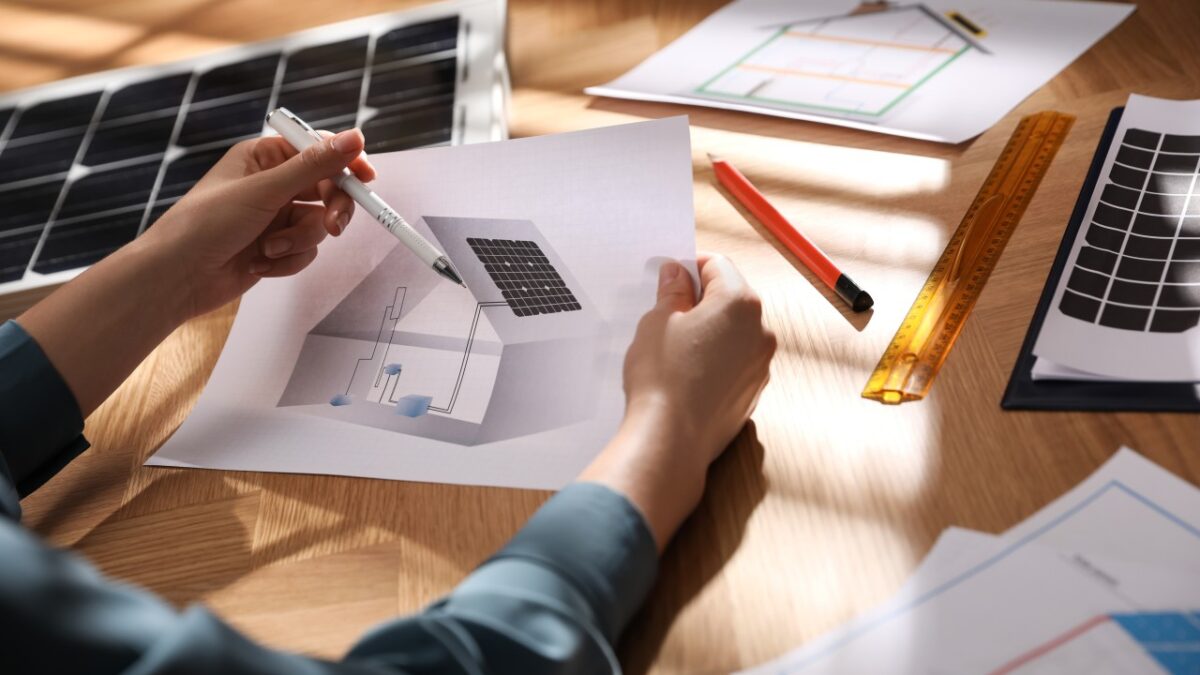

The operational safety of a photovoltaic system depends largely on the quality of its installation. Mounting systems must withstand rain, strong winds and a thick layer of snow for at least 25 years. Choosing good quality mounting profiles is just as important as choosing the photovoltaic panels or inverter themselves. What are the types of photovoltaic panel mounting and which one should you opt for?
Photovoltaic panels retain their parameters for up to 25-30 years, so mounting structures must be equally sound. Resistance to bending, corrosion or breaking is the absolute basis for efficient and safe operation of the panels. Excessive stress could lead to fracture of the glass surface of the modules, which generates not only additional costs, but also the risk of damage to other elements. The quality of mounting rails, hooks, connectors, frames, clamps, screws or nuts directly affects the durability of the installation. The two most common types of mounting systems for PV panels are roof and ground mounted systems. The roof system, mounted on the slope of a house, garage or utility building, enjoys the greatest popularity in Poland. It is the cheapest and at the same time does not take up any space in the garden. However, some investors decide to install the system on the ground, which gives more possibilities and usually guarantees higher power yields. Which installation of photovoltaic panels to choose?
Choosing the right type of photovoltaics depends not only on your preferences or budget, but also on other factors. The most important of these is the exposure of the roof. The greatest production of electricity from the sun will be provided by a south-facing roof, so houses with this design already have an advantage. The construction of the roof trusses is also an important factor. If the roof is old, rotten or unsuitable for heavy loads, it may not be possible to install photovoltaic modules. For this reason, before carrying out the work, experienced photovoltaic system companies carefully analyse the capacity of the building, also taking into account the additional snow cap load. They then select the right types of photovoltaic panel installation. What ares the types of photovoltaic panel mounting?

A photovoltaic system on the roof brings many advantages. It is aesthetic, easy to install and inexpensive. Before installing the photovoltaic panels, special mounting profiles made of galvanised stainless steel or aluminium are positioned on the roof slope. The panels are then fixed with clamps, which are resistant to rust, UV radiation and high temperatures.
Photovoltaic panels on pitched roofs can be mounted on different surfaces. If the roof is covered with ceramic tiles, some elements require cutting. In the case of tile roofing and other coverings (including installation of photovoltaic panels on roofing felt), holes are drilled, which must then be well sealed. The precision of the work determines whether the roof will not leak. Another installation error is putting too much tension on the individual PV panels. The mounting installation should also take into account the ventilation of the modules and the routing of cables away from heated components. This is crucial for fire safety. For installation on a pitched roof to be feasible, the roof must have adequate roof truss strength. If the attic is not developed, it is sometimes sufficient to reinforce the roof structure or replace damaged components. However, the shape of the roof is crucial for the efficiency of the installation. A pitched roof can be said to have a slope of at least 15 degrees, but the best slope is 30-35 degrees. It guarantees the best incidence of sun rays. The design should also take into account chimneys, dormers and other elements which could shade the cells. If neither slope faces south, an east-west photovoltaic system with panels on both sides of the pitched roof is an alternative.
Limiting the tilt of the solar panels to about 20-25 degrees can increase the electricity yield during the summer season, when energy production is highest. However, the panels must still have a slope. On flat roofs, therefore, additional support structures are used, which position the modules at an angle of 30-35 degrees. Detailed inclination is determined individually for each building, and in the southern part of Poland panels are set slightly more horizontally than in the north of the country. Flat roof gives more possibilities, because it does not depend on the direction of the house.
Types of photovoltaic panel mounting – the panels can therefore be oriented to the south, which guarantees a high peak power output and a long period of power production. The type of support structure for a flat roof depends on whether it is possible to fix a frame to the roof. The invasive method offers the greatest safety and is recommended by specialists. However, if the installation cannot be bolted to a flat roof, ballast weights in the form of concrete blocks are used. Their weight must then be taken into account. An alternative method for ballasting is a glued or welded system. This is a dedicated system for roofs with low load-bearing capacity. Trapezoidal rails are not loaded, but strapped with bands, which are then permanently bonded to the roof membrane.
Ground-mounted structures are becoming increasingly popular in Poland. Although they are more expensive, they have a number of important advantages. Thanks to steel or aluminium frames, the panels can be positioned in any way to increase the production of electricity. Higher yield is the effect not only of more favourable setting, but also better ventilation of PV modules. In addition, ground-mounted photovoltaic panels are easily accessible, so cleaning them of leaves, dust and bird droppings is not a problem. This is important, because even a few percent shading of the cell can lead to a decrease in efficiency by several dozen percent. Ground-mounted photovoltaic systems use driven, screwed or embedded frames on concrete foundations.
The selection of the frames depends not only on the size and weight of the panels, but also on the composition of the soil. The construction can be based on a double or single row of posts. The most advanced ground-based system is to set the panels on rotating trackers that move relative to the position of the sun. However, this is an expensive and rare system for mounting photovoltaic panels.
Do you want to know more? Read also about which photovoltaic panels to choose for your photovoltaic system.
Our offer
Useful
Shop